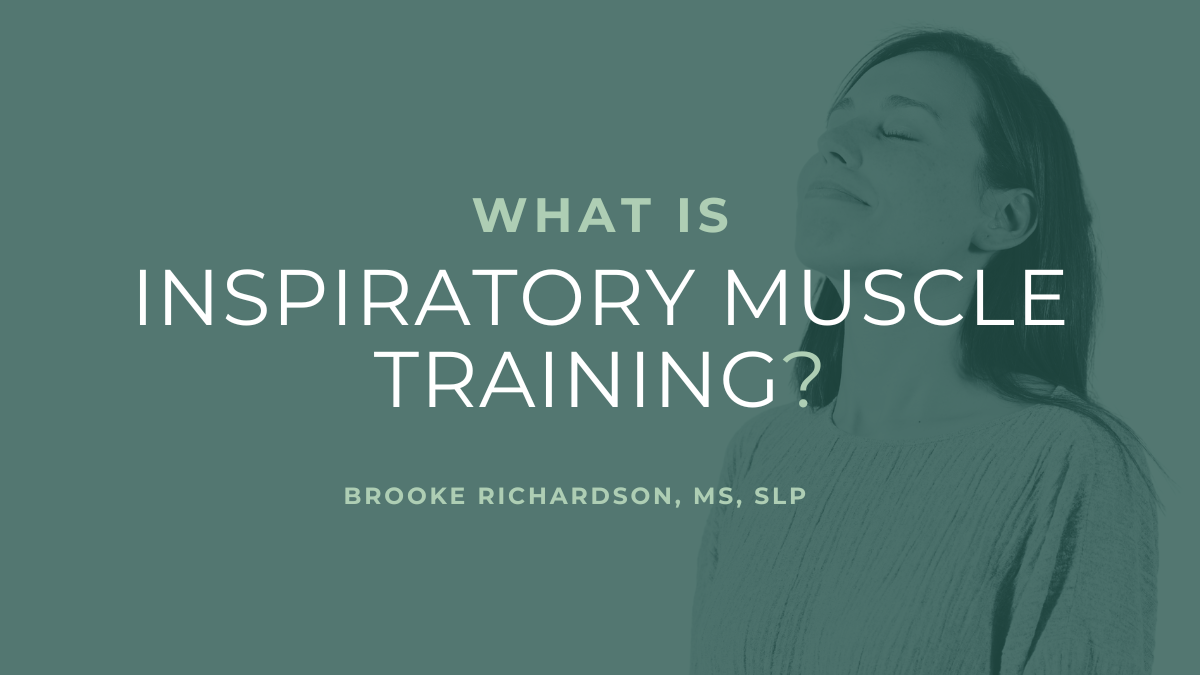Inspiratory Muscle Training (IMT): Benefits, Uses, and How to Start

Learn what inspiratory muscle training is, how it works, the benefits for respiratory health and athletic performance, and how to use IMT
Inspiratory Muscle Training: A Complete Guide
Introduction
Breathing is automatic, but that doesn’t mean it can’t be trained. Inspiratory muscle training (IMT, aka inspiratory muscle strength training / IMST) is an evidence-based method for strengthening the muscles used to breathe in. It’s widely used in pulmonary rehabilitation, athletic performance, and general wellness. Whether you’re a healthcare professional or simply curious about improving your breathing, here’s what you need to know.
What Is Inspiratory Muscle Training?
Inspiratory muscle training is a form of respiratory muscle training (RMT) that focuses on the diaphragm and intercostals. Using an inspiratory muscle trainer, you breathe in against resistance, training these muscles to be stronger and more efficient.
Think of IMT as the dumbbell for the diaphragm.
How Does Inspiratory Muscle Training Work?
IMT uses a device that creates load ('resistance') when you inhale. The resistance is set at a fixed level and should be adjusted to match progress over time, in the same way that you would increase weights at the gym. When you breathe in against this load:
-
Your diaphragm contracts more forcefully, increasing inspiratory strength and endurance.
-
Your breathing efficiency can improve, which can help reduce the sensation of breathlessness (dyspnea).
This type of training is backed by a growing body of research in pulmonary rehabilitation, sports performance, and recovery from illness.
What are the Benefits of Inspiratory Muscle Training?
There are many known benefits of IMT, including:
1. Improved Inspiratory Muscle Strength
Stronger breathing muscles can make daily activities feel easier -- from climbing stairs to elite athletic exercise.
2. Reduced Dyspnea
IMT can help decrease the perception of shortness of breath (dyspnea) in people with conditions such as COPD, heart failure, or post-COVID respiratory changes.
3. Enhanced Athletic Performance
Athletes use IMT to delay the onset of breathing fatigue during high-intensity exercise, improving endurance and recovery. Strengthening the diaphragm can lead to improved performance of other muscles like the arms and legs.
4. Support for Pulmonary Rehabilitation
IMT is often incorporated into rehab programs for lung disease, before and after surgery, or during recovery from respiratory illness. People who are dependent on ventilators (breathing machines) can sometimes be liberated from the ventilator thanks in part to a robust IMT program.
Who Can Benefit from IMT?
IMT has applications across a wide range of populations, including:
Individuals
-
People recovering from lung, heart, or neuromuscular conditions
-
Athletes aiming to boost breathing endurance
-
Post-surgical patients rebuilding breathing function
-
Healthy individuals wanting to optimize lung health
Professionals
-
Clinicians incorporating IMT into rehab programs
-
Fitness trainers using IMT to enhance conditioning
Athletic coaches integrating breathing performance strategies
Why Professionals Use IMT
Clinicians, fitness trainers, and coaches integrate IMT to improve outcomes in their clients or patients-- whether that’s climbing stairs without stopping, finishing a race without hitting a breathing wall, or liberating (weaning) from a ventilator.
Frequently Asked Questions
Is IMT the same as breathing exercises?
Not exactly. While both focus on breathing, IMT specifically uses resistance to strengthen inspiratory muscles, whereas general breathing exercises may focus on relaxation, coordination, or lung expansion without added load.
Does inspiratory muscle training work for healthy people?
Yes. Studies in athletes and healthy adults show improvements in breathing endurance, especially during high-intensity exercise.
Can I use IMT without a diagnosis?
Yes, but if you have any health conditions, check with a qualified healthcare provider before starting. Always follow device manufacturer guidelines.
Key Takeaways
-
Inspiratory muscle training strengthens your breathing (inspiratory) muscles.
-
It’s used in rehabilitation, athletic training, and general wellness.
Consistency and proper technique are essential for results.
Next steps
This article is for educational purposes only and is not a substitute for medical advice. Always consult a healthcare provider before beginning any new exercise program.
Categories: : IMT, RMT basics
 Brooke Richardson
Brooke Richardson 